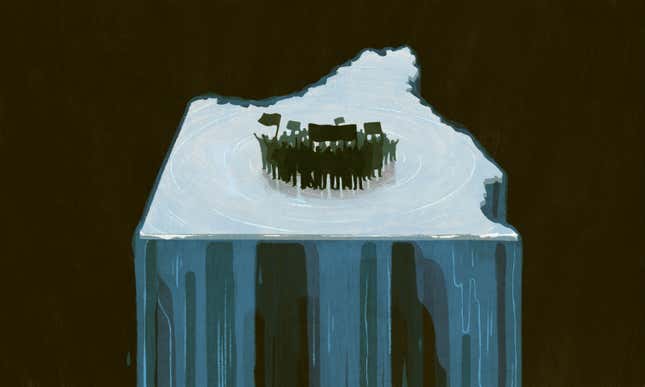The Standing Rock Protests Were About More Than Water
Latest

On Sunday, the US Army Corps of Engineers issued a statement announcing it would deny a key permit for the Dakota Access Pipeline. The announcement grants the Standing Rock Sioux a temporary stay in their fight against the pipeline’s route, and that stay has a strong chance of becoming a permanent victory.
The Corps’ decision represents a victory for the thousands of water protectors that have endured months of grueling conditions—suffering through below-freezing temperatures, nights interrupted by the sounds of planes roaring overhead, being shot by water cannons and rubber bullets—with inspiring determination and radical generosity.
To understand these sacrifices, non-Natives must recognize that the Standing Rock protests have always been about much more than water.
In September 2016, Energy Transfer Partners—the company behind the Pipeline designed to transport oil between North Dakota and Illinois—said the Standing Rock Sioux of North and South Dakota had not proved the Pipeline threatened the Standing Rock Sioux’s sacred sites. The Standing Rock Sioux responded by filing evidence such as maps drawn by a cultural expert following an archeological survey. Not 24 hours later, Energy Transfer Partners
began destroying those burial grounds.
As a multiracial Native American woman, I felt this violation viscerally. When I was a little girl, some white teenagers went to the graveyard at St. Clair Missionary Baptist Church in Shepherd, Texas, hardly an hour from my Houston home, and—driven by a mixture of boredom and bigotry—destroyed the historic graves of the African Americans and Native Americans buried there, including those belonging to Sallie, my Cherokee ancestress. I learned then that settlers could do whatever they wanted to me and mine. I can no longer kneel at Sallie’s burial place. I can only stand under the shade of the cemetery’s pecan trees and pines and wonder where, exactly, she rests. She is lost to me. And now, the ancestors of the Standing Rock Sioux are lost, too. We Indians are sick of losing our relatives. That’s what the protests were about.
A few years ago, I traveled to Michigan to attend a Native American academic conference and to do fancy shawl dance at a powwow. At one point during the weekend, Ojibwa tribal elders invited a group of us postgraduates into a longhouse, a spiritual space, where they blessed us in a ceremony. Few people are pessimistic enough to guess accurately what percentage of Native Americans have college degrees. It’s eleven. Each of us had been the beneficiary of generations of prayers, and the prayers from the tribal elders hallowed us anew. But we were quickly distracted from the joy and hope of the moment—one of the elders asked us to enter the longhouse next door and pray with the family inside. The son of the family had just died of an overdose.
-

-

-

-

-

-

-

-

-

-

-

-

-

-

-

-

-

-

-

-

-

-

-

-

-

-

-

-

-

-

-

-

-

-

-

-

-

-

-

-








































